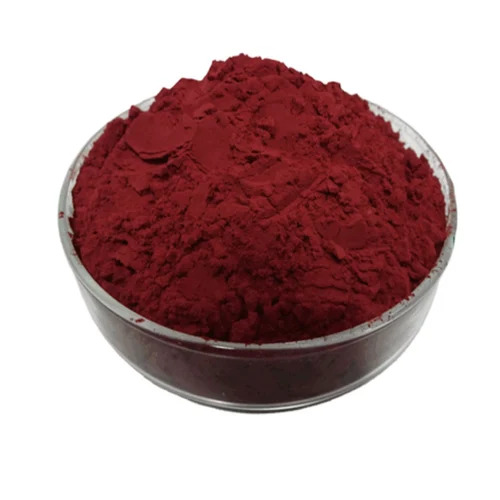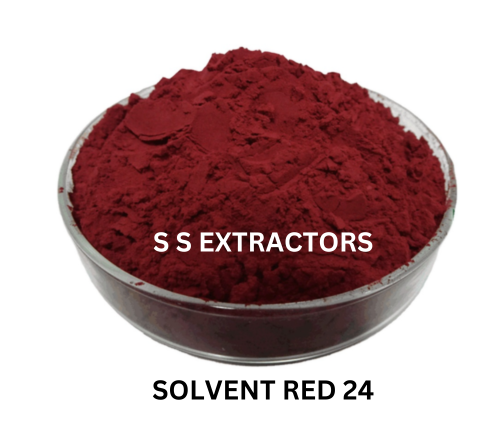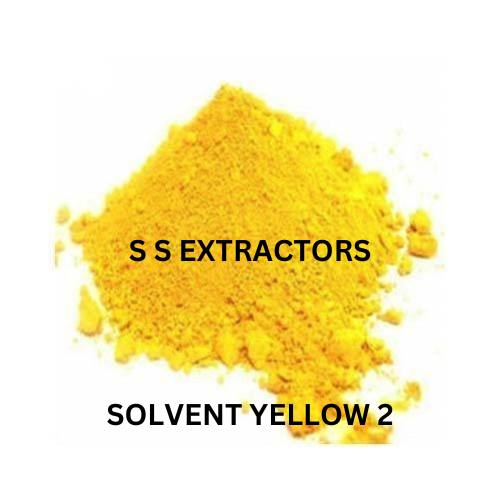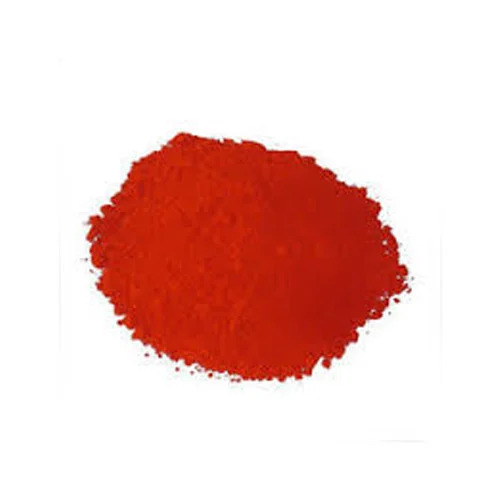Oil Red 23 Dyes
Oil Red 23 Dyes Specification
- Solvent Color
- Red
- Ph Level
- 7 TO 8 (In Water)
- HS Code
- 85-86-9
- Density
- 0.12 TO 0.16 Kilogram per litre (kg/L)
- Rubbing Resistance
- Dry
- Solubility
- IN SOLVENT, OIL, WEX, VERY SOLUBLE IN BENZENE.
- CAS No
- 85-86-9
- Type
- Solvent Dye
- Application
- Industrial
- Physical Form
- Powder
Oil Red 23 Dyes Trade Information
- Minimum Order Quantity
- 10 Kilograms
- Supply Ability
- 20000 Kilograms Per Month
- Delivery Time
- 3-7 Days
About Oil Red 23 Dyes
Oil Red 23 is a synthetic dye that is commonly used in histology and biology for staining fat or lipids. It belongs to a group of dyes known as Sudan dyes, and specifically, it is part of the Sudan IV subgroup. These dyes are used to detect the presence of lipids, triglycerides, and neutral fats in tissues and cells.
Oil Red 23 is often used to stain frozen tissue sections, cell cultures, or other biological specimens to visualize and study the distribution of fat deposits. When applied, it selectively stains lipid-rich structures and appears as red or orange-red droplets or granules under a microscope.
Here's a basic overview of how Oil Red 23 staining works:
-
Fixation: The biological sample is typically fixed with a fixative like formaldehyde to preserve its structure.
-
Staining: The fixed sample is then incubated in an Oil Red 23 solution. The dye specifically binds to lipids, and lipid-rich structures within the sample will become stained.
-
Washing: After staining, the sample is washed to remove excess dye and non-specifically bound molecules.
-
Mounting: The stained sample can be mounted on a microscope slide and covered with a coverslip for examination under a microscope.
This staining technique is useful in various fields of research, including histology, pathology, and cell biology, to investigate fat distribution and lipid accumulation in tissues and cells. Researchers can use Oil Red 23 staining to identify and study conditions like lipid storage diseases, adipocyte differentiation, and fat content in various tissues.
Oil Red 23 is a synthetic dye that is commonly used in histology and biology for staining fat or lipids. It belongs to a group of dyes known as Sudan dyes, and specifically, it is part of the Sudan IV subgroup. These dyes are used to detect the presence of lipids, triglycerides, and neutral fats in tissues and cells.
Oil Red 23 is often used to stain frozen tissue sections, cell cultures, or other biological specimens to visualize and study the distribution of fat deposits. When applied, it selectively stains lipid-rich structures and appears as red or orange-red droplets or granules under a microscope.
Here's a basic overview of how Oil Red 23 staining works:
-
Fixation: The biological sample is typically fixed with a fixative like formaldehyde to preserve its structure.
-
Staining: The fixed sample is then incubated in an Oil Red 23 solution. The dye specifically binds to lipids, and lipid-rich structures within the sample will become stained.
-
Washing: After staining, the sample is washed to remove excess dye and non-specifically bound molecules.
-
Mounting: The stained sample can be mounted on a microscope slide and covered with a coverslip for examination under a microscope.
This staining technique is useful in various fields of research, including histology, pathology, and cell biology, to investigate fat distribution and lipid accumulation in tissues and cells. Researchers can use Oil Red 23 staining to identify and study conditions like lipid storage diseases, adipocyte differentiation, and fat content in various tissues.


Price:
- 50
- 100
- 200
- 250
- 500
- 1000+
More Products in Dyes Intermediates Category
Solvent Red 24
Price 600 INR / Kilograms
Minimum Order Quantity : 50 Kilograms
Ph Level : 7
Grade : Multi Purpose
Rubbing Resistance : Dry
Physical Form : Powder
Red 24 Dyes
Price 500.00 INR / Kilograms
Minimum Order Quantity : 10 Kilograms
Ph Level : 7 TO 8
Grade : Industrial Grade
Rubbing Resistance : Dry
Physical Form : Powder
Yellow 2 Dyes
Price 600.00 INR / Kilograms
Minimum Order Quantity : 10 Kilograms
Ph Level : 7 TO 8
Grade : Industrial Grade
Rubbing Resistance : Dry
Physical Form : Powder
solvent dyes
Price 600 INR / Kilograms
Minimum Order Quantity : 50 Kilograms
Ph Level : 7
Grade : A
Rubbing Resistance : Dry








 Send Inquiry
Send Inquiry Send SMS
Send SMS